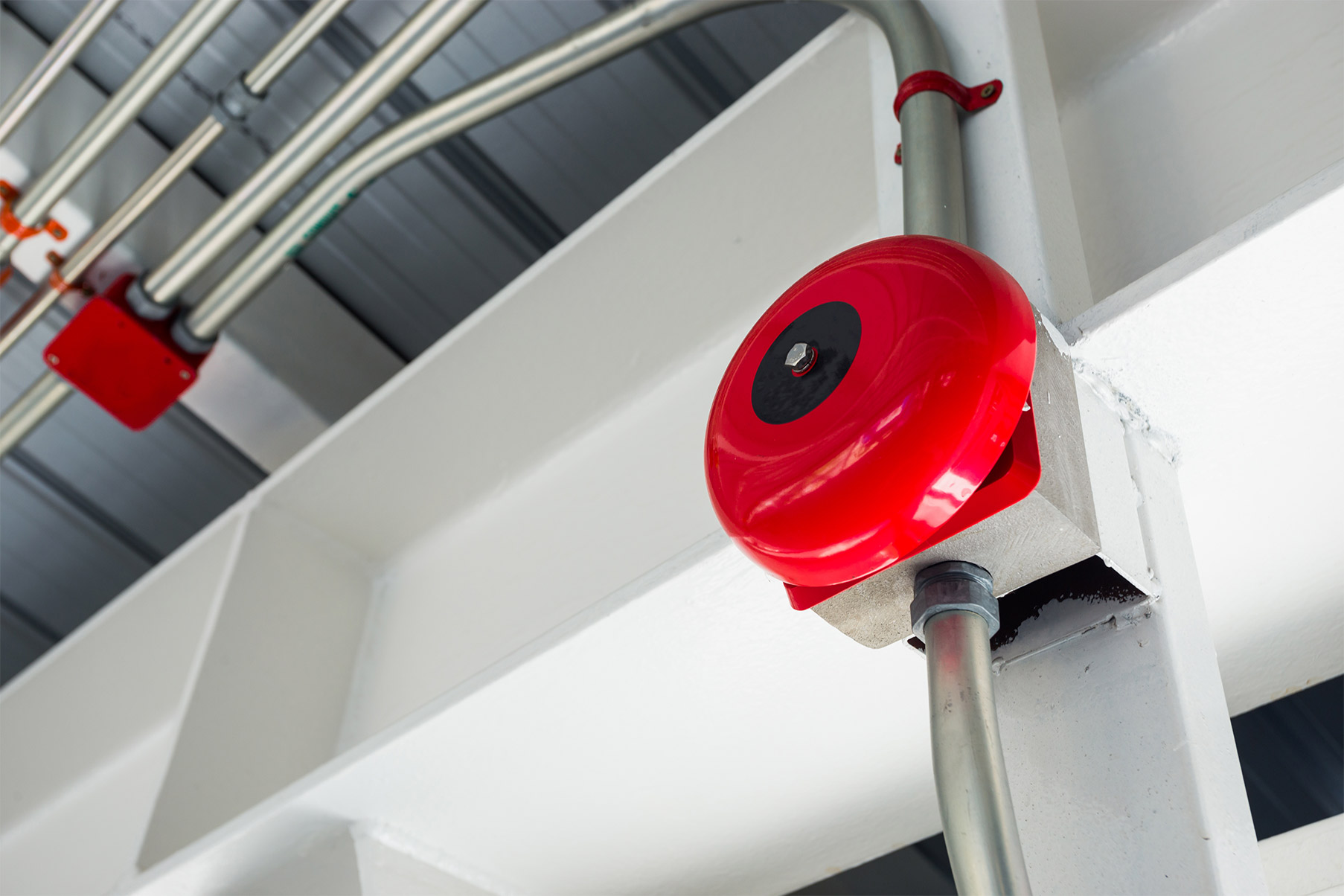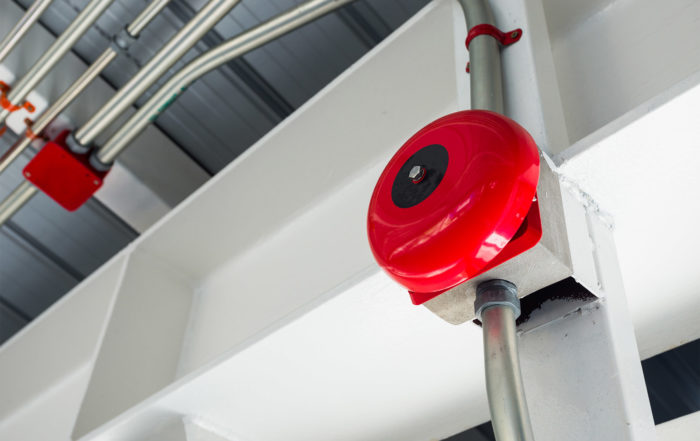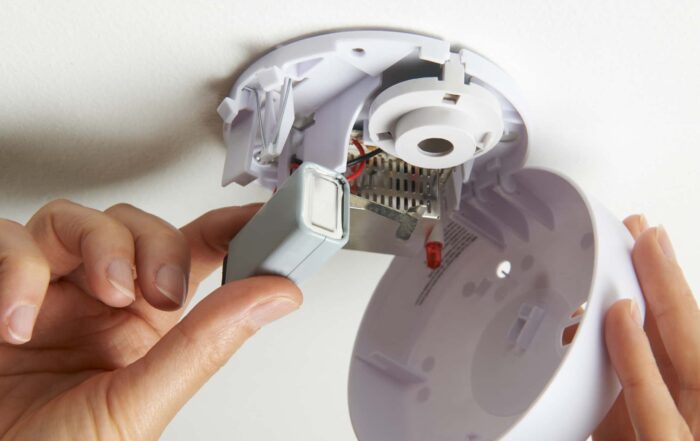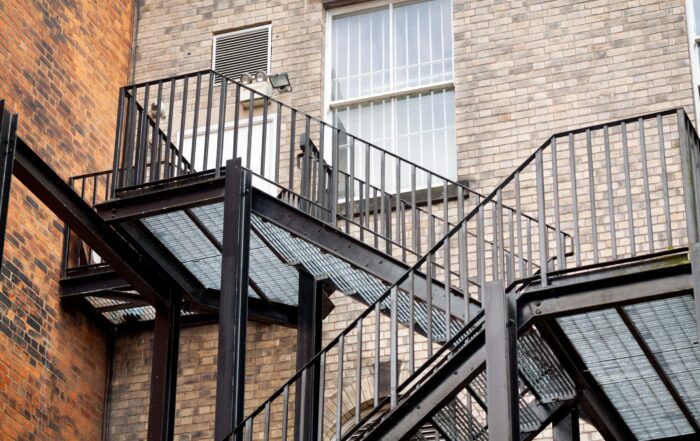The Ultimate Guide to Fire Alarms for Construction
Making sure you’re complying with every relevant regulation is a must for construction sites. Not only does this keep you in-line with the law – it also provides extra safety for your workers. Due to the various hazardous involved with construction, fire safety is one of the most prevalent and important aspects of risk management to consider.
At Sovereign Fire & Security, we provide leading services for the installation and maintenance of fire and life safety systems. In this guide we’ll help you understand the regulations around construction site fire protection and offer ways in which you can comply with them.
For support on getting the best solution for fire safety and alarm systems on your project, get in touch.
Construction Site Fire Safety Regulations
The Health and Safety Executive (HSE) – the governing body for building and construction regulations in the UK – has a set of guidelines based on the Regulatory Reform (Fire Safety) Order 2005.
These regulations set out the law on what must be done to ensure a building or construction site is adequately protected in the event of a fire.
Why are there Construction Fire Safety Regulations?
Buildings under construction or refurbishment can often suffer from serious fires breaking out. These fires could have been avoided had the proper precautions been taken.
With so many raw materials present at a construction site, it is important to consider what the risks of fire are. If a fire does break out, it could be disastrous to your workforce, project, and even the general public.
In the event of a fire, making sure you have the proper signage, lighting, and alarm systems in place can alert the relevant persons as to the danger and proceed with the next step. The primary function for this is evacuation, but it can also help with responding to the fire more quickly and stemming any damage it may otherwise do.
Learn about automatic fire detection systems and why they’re important >
What is Covered Under the 2005 Fire Safety Regulatory Reform?
There are two main elements the Fire Safety Regulations 2005 cover with regards to construction sites. These are the handling and use of combustible materials, as well as the consideration and control of ignition sources.
Combustible Materials. There are many types of materials that are flammable on construction sites. While not all of these can be avoided as many are needed for construction, the 2005 regulations set out guidelines to mitigate the risk. They mention eight key areas of consideration, including:
- Quantity
- Flammability
- Storage
- Waste
- Volatile flammable materials
- Coverings and sheeting
- LPG
- Tanks and services
Ignition Sources. Removing, reducing, and controlling ignition sources present on a construction site can drastically reduce the risk of fire. Placing fire alarm systems in places where ignition is more likely or more dangerous, such as in kitchen locations or storage facilities, can also help in reducing the risks. There are six key areas to consider for ignition sources, including:
- Hot work
- Plant and equipment
- Smoking
- Electrical installations
- Bonfires
- Arson
Many of these aren’t in the control of the building site managers, but making sure you have the proper surveillance and alarm systems can reduce or even mitigate the danger these sources present.
Make sure you’re compliant with the relevant fire regulations by contacting us today!
How to Comply with Construction Site Fire Safety Regulations
Once you’ve identified the areas of concern for your construction site, you should start preparing for the event of a fire.
It is not enough to simply mitigate the risks – if a fire does break out, it is a requirement that you have the appropriate measures in place to deal with it and guide people to safety.
Fire Alarms for Construction
Warning people of fire gives them time to get away and alerts the unaware a danger is present. On a construction site this risk is even more important to consider due to the increased risk of fire and the noises present that may drown out the sound of an inappropriate alarm.
Fire alarms and detection systems must:
- Create a clear and audible sound. This is especially important given the noise levels that may be present on your construction site due to the heavy machinery involved.
- Be easily recognisable as a fire alarm. You don’t want to use a sound that is commonly heard on site, and instead need something that is easily distinguishable.
- Cover your entire site. Everyone present on or near your construction site needs to be able to hear your fire alarms in case the fire spreads, so an interconnected fire alarm system can be helpful depending on the scale of the project.
- Use appropriate measures. Where word of mouth is enough, a fire alarm may not be required. However, it is usually best to use one due to the noise of construction.
- Be used in tandem with other fire safety measures. Having a responsible person, a clear evacuation site, and signage pointing people in the direction of safety are all important aspects to consider alongside your fire alarm.
Protect your offsite storage with our fire and security tips to protect your warehouse >
Fire Alarms for Construction from Sovereign Fire & Security
When you comply with the relevant fire alarm and safety regulations, you ensure your workers and construction project are best secured in the event of a fire.
Comply with the relevant regulations and increase your overall fire safety with fire alarms and safety systems from Sovereign. We design, install, and maintain systems to provide the best solution for fire safety on your construction site. Get in touch to find out more, see our services, or read on!
Read our guide on fire regulations for office buildings in the UK >
Recent Articles
What is an Automatic Fire Detection System? ( Cloned )
When it comes to choosing a fire detection system for your business, an automatic solution is often the best choice. Instead of waiting for human intervention, your system will provide [...]
Innovations and Regulations for Smoke Detection and Fire Alarms
Making sure your fire safety systems are up to standards saves lives, protects your building, and ensures you’re compliant with government regulations. However, with so many types of alarm systems [...]
Fire and Security – The Complete Guide to Fire Escape Regulations in the UK
Fire risks are real, with 622,173 incidents attended by Fire and Rescue Services in England for the year ending March 2023. Many things can keep you safe from fires. But [...]




